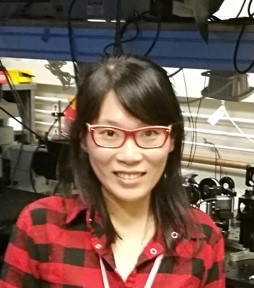Quantum Physics and Quantum Engineering in Atomically Thin Crystals

Speaker: Dr. Qiong Ma
Affiliation: Massachusetts Institute of Technology (MIT)
Abstract: In quantum materials, the interplay of symmetry, topology, quantum geometry and interactions can produce new phases of matter with fundamentally new electronic and optoelectronic properties. Two dimensional van der Waals materials, with highly tunable symmetry, band structure, carrier density and interactions, allow for reaching previously inaccessible experimental parameter regimes. Such highly tunable material platforms provide exciting possibilities to discover new fundamental quantum physics, which can in turn guide the engineering of new quantum technologies for sensing, communications and computations.
In this talk, I will present our recent research along this line. First, I will show that the optoelectronic response of graphene can be controlled among highly distinct regimes by tuning the interaction dynamics of photo-excited carriers. In particular, we observe a new type of photocurrent that appears exclusively in charge neutral graphene with unusual ultra-relativistic electron scattering kinematics. Second, I will show that the interplay between nontrivial topology and novel crystalline symmetries in atomically thin WTe2 gives rise to new Berry curvature physics, which can be detected by nonlinear electrical transport and infrared photocurrent measurements. Remarkably, the nonlinear electrical transport in bilayer WTe2 uncovers a new type of electrical Hall effect under the time-reversal-symmetric condition. Such a nonlinear Hall response directly measures the energy-dependent “dipole moment” of the Berry curvature that arises from layer-polarized Dirac fermions. Our work highlights the potential for using intrinsic quantum and topological properties for nonlinear applications including frequency-doubling and rectification in the GHz and infrared regimes. In the end, I will discuss new opportunities towards fundamental physics and device functionalities with the combination of highly tunable material platform and advanced characterization and manipulation methods.
Biography: Dr. Qiong Ma got her Bachelor degree from the University of Science and Technology (USTC) in China in 2010. She then moved to MIT where she got her PhD in physics in 2016 under the supervision of Prof. Pablo Jarillo-Herrero. She is now continuing as a postdoc at MIT. Dr. Ma’s research focuses on discovering and understanding fundamentally new optical, electrical and optoelectronic phenomena in novel quantum materials. She is especially interested in those new properties with large responsivity that may provide new schemes for device applications. Dr. Ma’s PhD work focused on the understanding the energy dissipation of hot carriers and the plasmonic properties in graphene heterostructure electronic devices. In her postdoctoral research, Dr. Ma has broadened up to various 2D and 3D quantum materials/devices beyond graphene. She has identified new nonlinear optoelectronic responses that arise from quantum Berry phase physics in the 3D topological Weyl semimetal TaAs, the 2D topological insulator WTe2, etc. These new optoelectronic phenomena may be applied for THz/infrared detection, energy harvesting, wireless charging and other quantum technologies.
For more information, contact Prof. Benjamin Williams (bswilliams@ucla.edu)
Date/Time:
Date(s) - Mar 11, 2019
11:00 am - 12:15 pm
Location:
EE-IV Shannon Room #54-134
420 Westwood Plaza - 5th Flr., Los Angeles CA 90095
